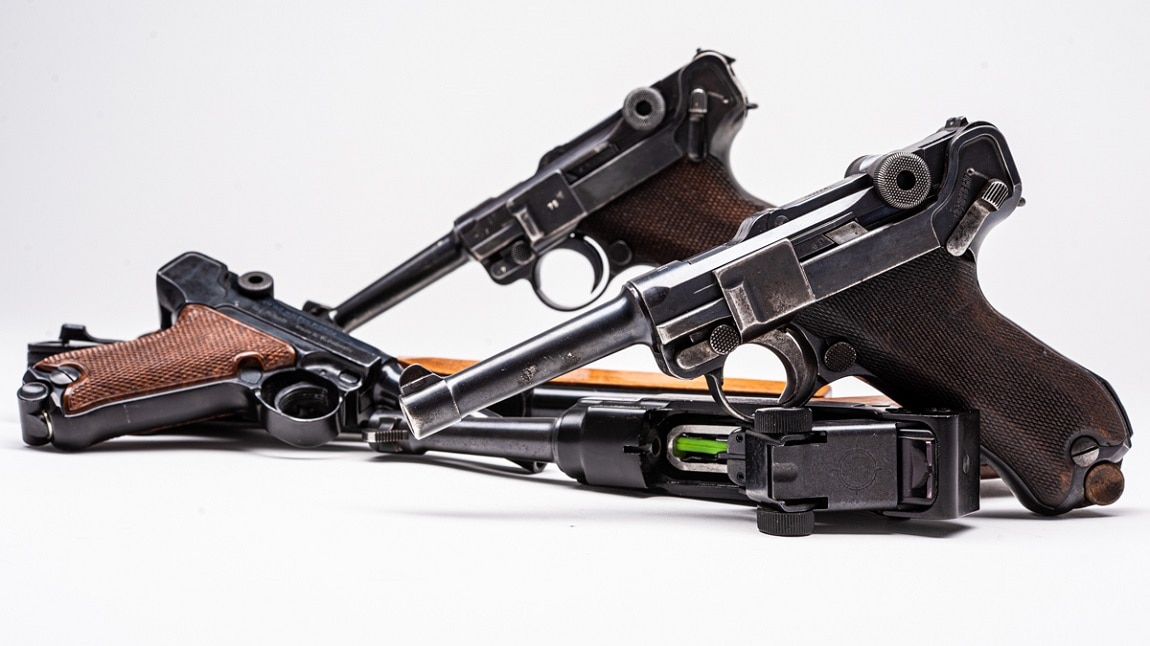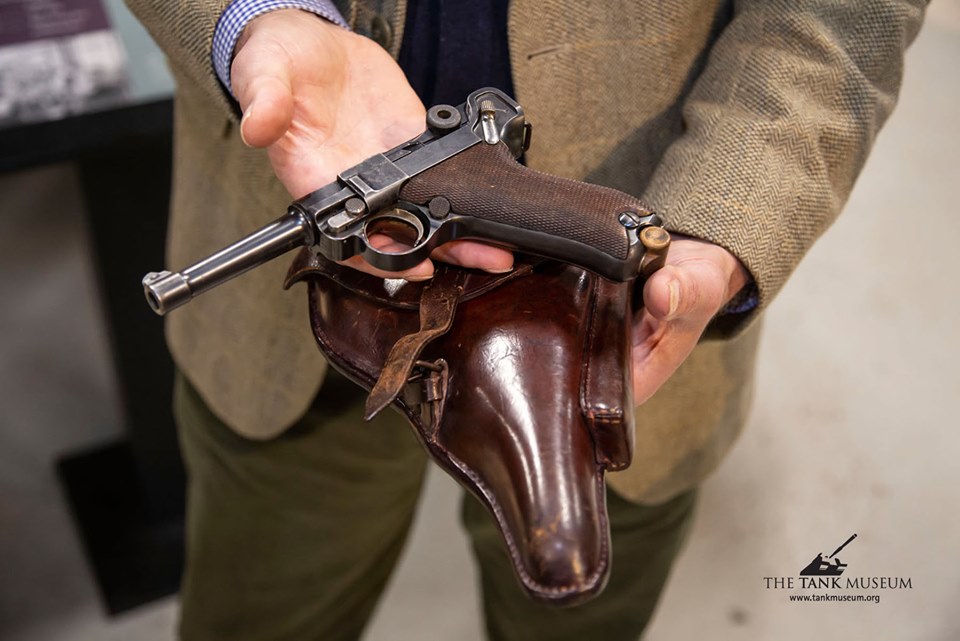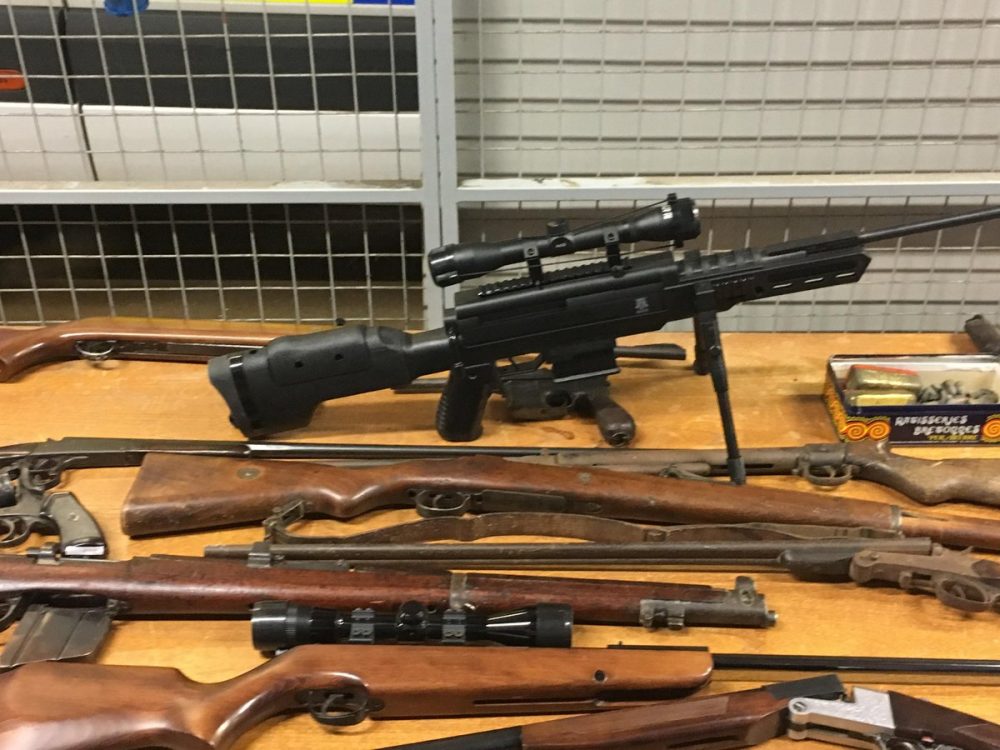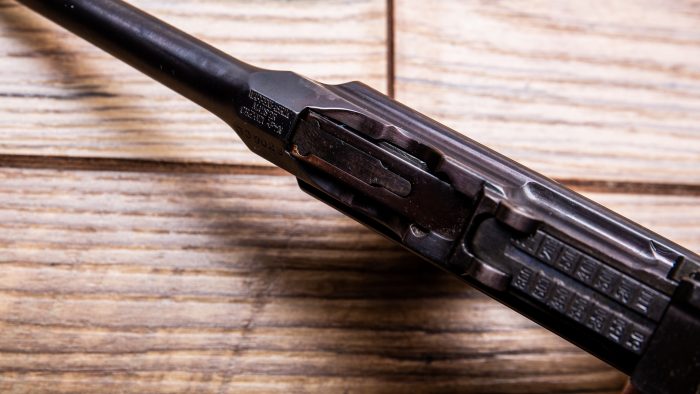
While most of the firearms surrendered in the gun control-heavy UK are destroyed, a 1911-dated Luger was recently preserved (Photo: Wiltshire Police)
Turned over in a police firearms surrender, a trophy Luger from a historic Great War battle on the Western Front is now in a museum.
The pistol, a 1911-marked DWM, was collected by the Wiltshire Police during the UK’s National Firearms Surrender this summer. While the majority of firearms collected will be torched, the Luger was passed to the famed Tank Museum in Bovington for them to display.
“Firearms handed into the police during surrenders are sent for ballistic tests to ensure they haven’t been used in crime and are usually then destroyed,” said Wiltshire Police Armourer, Jamie Ross. However, an exception was made for the Luger, which was transferred in unmolested condition. “This live firearm is a part of history and I know that it is a welcome addition to the collection at the Tank Museum,” said Ross.
The standard sidearm of the Imperial German Army, the P08 DWM Parabellum was best known simply as the Luger after its inventor, Georg Luger. First adopted by the Swiss Army in 1900, the Luger design went on to serve in several militaries in Europe, Asia, and South America as well as prove a success on the commercial market, remaining in factory production until 1945.

Still very much in regular circulation over here on this side of the pond, we typically have any number of both historic Lugers and clones such Stoegers and Ermas in the Guns.com Vault.
The pistol preserved this week was linked to the pivotal Cambrai attack, one of the first large scale use of tanks in history, and the holster is marked “Souvenir of the Big Advance at Cambrai November 1917.”
“The Battle of Cambrai is a hugely important moment in the history of the Royal Tank Regiment, so to be given this weapon captured during the battle is of real significance to The Tank Museum,” said Museum Curator, David Willey. “We are very grateful to the Wiltshire Police for handing it over to us and allowing us to preserve it for the collection.”

The intact DWM was made in 1911 and, brought back as a war trophy the UK, will be preserved (Photo: The Tank Museum)
The two week firearm surrender brought in “65 firearms, 24 flares and 21 rounds of ammunition” cataloged by Wiltshire including two WWI-era Short-Magazine Lee-Enfield rifles, a Webley .455, and what was described as a “Mauser Machine Pistol” although photos of the event would suggest the latter was a normal semi-auto C96 Broomhandle as it does not have the extended magazine common in the Schnellfeuer (literally, “quickfire”) guns.

The flotsam of history, mixed with BB guns and flare guns at this summer’s firearm surrender in Wiltshire. Note the C96 tucked under the fearsome-looking airsoft rifle (Photo: Wiltshire Police)
Although never formally adopted by the German Army as a primary sidearm, the C96 was common on the battlefields of Europe from the Balkan Wars onward as well as in colonial dust-ups around the globe and the Far East, still occasionally popping up in hotspots today.

Our C96 currently in stock looks to be wartime (as in World War I) commercial model with a serial number in the 300,000 range. This particular C96 is looking for a private collector to take it home today. Preserve some history on your terms. (Photo: Richard Taylor/Guns.com)
The post Rare WWI-era Luger Saved from Torch by British Museum appeared first on Guns.com.
